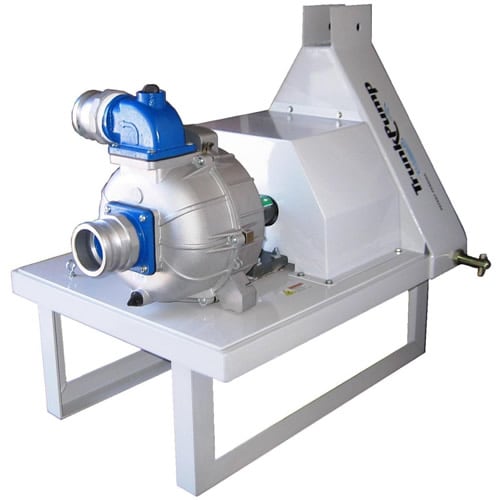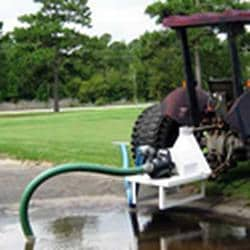
PTO Water Pump Buyer's Guide
If you own a tractor, you can use a power take-off (PTO) pump to move massive quantities of water quickly.
Whether you work on a farm or a golf course, small portable pumps just aren't big enough to pump the water out of a flooded sandtrap or irrigate your crops, and that's where PTO pumps come in.
In this article, learn why PTO pumps may be the solution you've been searching for.
How Do PTO Pumps Work?

PTO pumps (sometimes called trunk pumps) connect directly to the back of a tractor and are powered using the gas engine's driveshaft, essentially converting rotational power into hydraulic power via the power take-off. PTO pumps are typically connected to a 3-point tractor hitch and attached to the PTO drive shaft located at the rear of the tractor. The connections will be secured using the proper nuts and bolts.
Benefits of PTO Water Pumps
PTO pumps are high-output pumps, and one of their biggest unique benefits is their ability to tap into the massive power of a gas-powered tractor engine to move huge quantities of water quickly.
1. PTO Pumps are Maintenance-Free
If you've ever tried fixing a broken water pump, you know that it can be more trouble than it's worth. That's why maintaining your equipment is so important.
PTO pumps put fear of failure to rest because they're virtually maintenance-free.
Because they don't use their own engines, PTO pumps are extremely easy to maintain and come without the worries of gas breaking down the pump over time or spark plugs that need to be replaced. The solid construction of the pump, which includes a powder-coated steel frame, allows for years of dependable use.
2. PTO Pumps Are Easy to Use

Due to their large size and performance capabilities, you may assume using a PTO pump would be impossible to set up yourself, but you'd be surprised how easy it is. You won't have to waste anyone's time helping you set it up.
Just back the tractor up to the pump, hook up the pump and get to work. The beauty of these PTO pumps is they don't require many tools for setting up and tear down.
3. PTO Water Pumps are Powerful
The most powerful PTO pump can pump more than 30,000 gallons per hour (GPH). This is the most important factor in determining which water pump will best suit you. Pumps with a higher GPH don't work any differently than less powerful pumps, they just pump more water faster. Keep in mind most PTO pumps measure output in gallons per minute (GPM).
PTO Water Pump
Applications
PTO Pumps are loved by those serving the agricultural industry because they are extremely powerful, easy to use, can prime in seconds, and can last for years since they don't have an engine and are virtually maintenance-free. Basically, you can use a PTO water pump anywhere you can fit your tractor next to a pool of water to pump it elsewhere.
Common applications for PTO water pumps include:
- Draining ponds or small bodies of water
- Golf course pond maintenance
- Crop irrigation for farms/fields
- Use with Fire Engines
- Irrigation on farms or other agricultural areas
- Retention pond pumping
Big Pumps for Big Jobs
PTO water pumps will work on any tractor with power take-off available and have the proper/required minimum horsepower (HP) rating, so it's just a matter of knowing when to choose a PTO pump over other types of dewatering pumps. If you need portability, power, and ease of use around the farm, then attaching a PTO water pump to your tractor will be a great decision you can be proud of. You'll get a durable pump meant to last years, won't have to perform much maintenance, and you'll be able to finish the job much faster than a typical dewatering pump/irrigation pump.
If you have more questions about how to use them or how they work, please give us a call and we'd be glad to talk you through it.
![]() NEXT: View Best-Selling & Top-Rated PTO Pumps
NEXT: View Best-Selling & Top-Rated PTO Pumps





